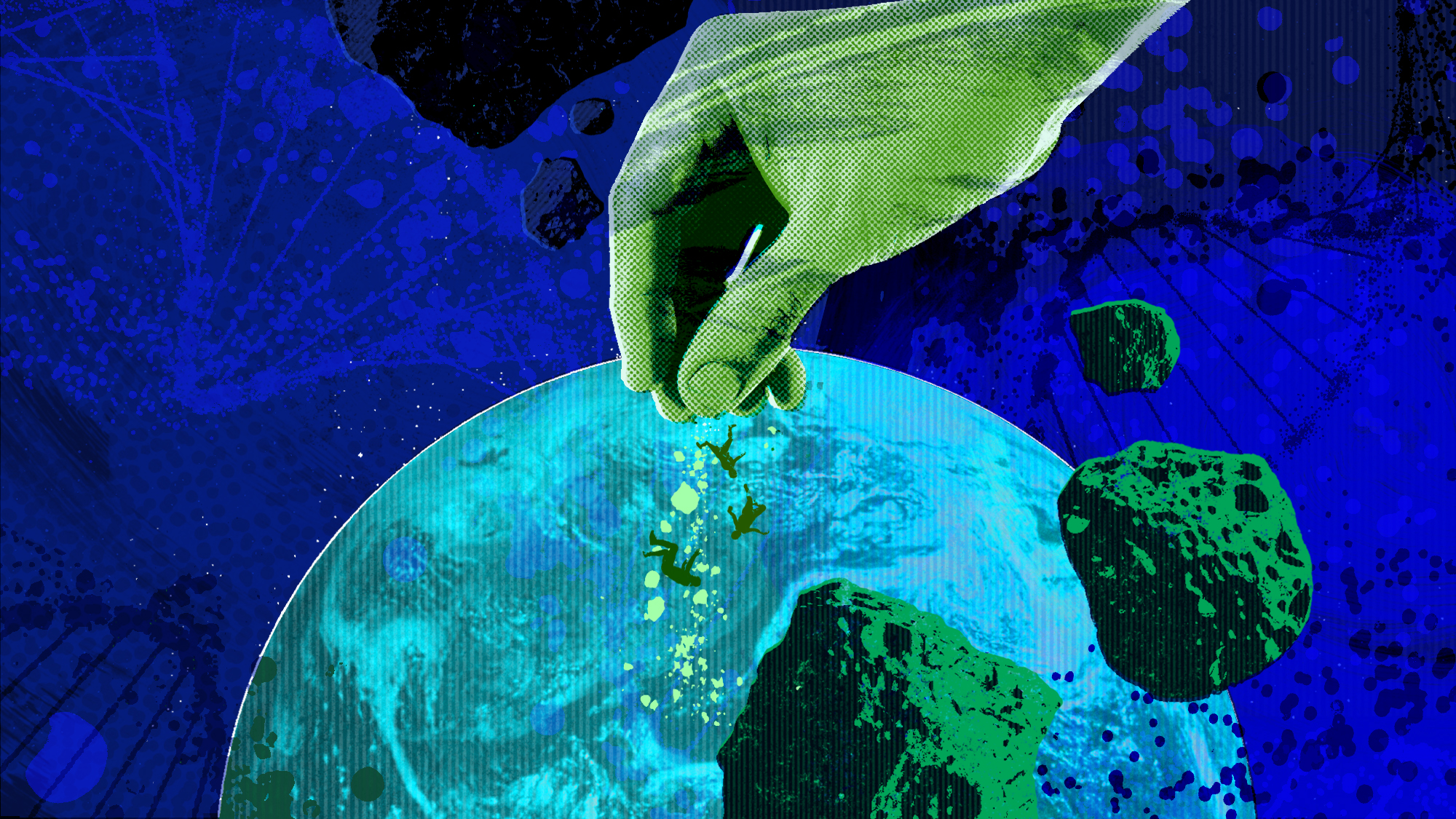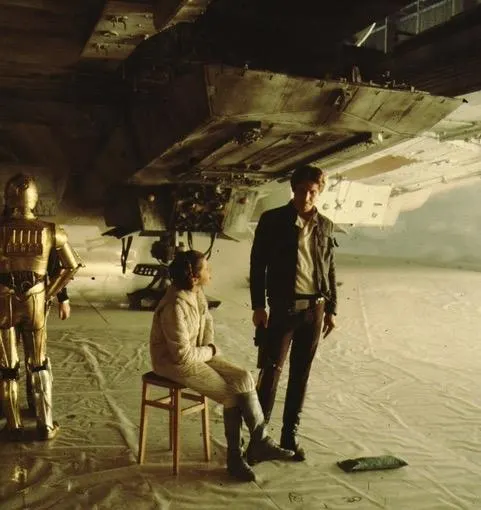By Chas Newkey-Burden
Copyright theweek

SUBSCRIBE & SAVE
Less than $3 per week
View Profile
The Explainer
Talking Points
The Week Recommends
Newsletters
From the Magazine
The Week Junior
Food & Drink
Personal Finance
All Categories
Newsletter sign up
under the radar
Panspermia: the theory that life was sent to Earth by aliens
New findings have resurfaced an old, controversial idea
Newsletter sign up
The ‘building blocks of life’ could have been delivered to Earth on asteroids billions of years ago
(Image credit: Marian Femenias Moratinos / Getty Images)
Chas Newkey-Burden, The Week UK
19 September 2025
We often wonder whether there are aliens on other planets but what if we ourselves are aliens on the planet we call home?
Panspermia, the “controversial” theory that life “began elsewhere in space” and was “delivered to Earth on comets and asteroids”, is gaining new traction, said BBC Science Focus.
Building blocks of life
New analysis of asteroid rocks brought back to Earth by Japanese and Nasa-led space missions suggests a presence of some of the building blocks of life – which could mean that those “same building blocks”, and “perhaps even primitive microbial life”, could have been delivered to Earth on other asteroids or comets billions of years ago, said BBC Science Focus.
Scientists examining the rock samples have found carbon, ammonia, salts, 14 of the 20 amino acids needed to make proteins, and the “basic constituents of DNA and RNA”.
Escape your echo chamber. Get the facts behind the news, plus analysis from multiple perspectives.
SUBSCRIBE & SAVE
Sign up for The Week’s Free Newsletters
From our morning news briefing to a weekly Good News Newsletter, get the best of The Week delivered directly to your inbox.
From our morning news briefing to a weekly Good News Newsletter, get the best of The Week delivered directly to your inbox.
Of course, “just having the right conditions and ingredients” for life “doesn’t mean you’ll necessarily create life”, but the findings will still gladden the hearts of believers in panspermia.
The origin of those first life-delivering rocks could have been a nearby planet, like Mars, or somewhere light years away. And, if that was the case, the potential consequences are huge – because, if it happened here, it has probably happened on other planets, too.
‘Wild’ theories
The theory of panspermia dates back many years and was “popularised in the 1970s” by the British astronomers Fred Hoyle and Chandra Wickramasinghe, said BBC Science Focus.
Their suggestion that asteroids and comets could have been incubators for life wasn’t taken seriously at first, and the pair were regarded as “crazy”, said Paul Davies, a theoretical physicist and astrobiologist at Arizona State University.
Sign up for Today’s Best Articles in your inbox
A free daily email with the biggest news stories of the day – and the best features from TheWeek.com
Contact me with news and offers from other Future brandsReceive email from us on behalf of our trusted partners or sponsorsBy submitting your information you agree to the Terms & Conditions and Privacy Policy and are aged 16 or over.
But the theory gradually “became more alluring”, and “reached a fascinating peak” in 1996 when scientists believed they had discovered traces of microfossils of bacteria inside a meteorite from Mars that had landed in Antarctica. The discovery was later refuted.
Recently, in a “wild” new spin on the theory, known as directed panspermia, it’s been suggested that “aliens sent microbes or simple life forms” to Earth themselves, to “propel evolution”, said the Daily Mail.
Even if the panspermia (or directed panspermia) theory turns out to be true, it doesn’t answer the big question, said New Scientist, because it “simply relocates the problem of how life got going – we haven’t found evidence of life elsewhere”. Besides, we know that space is “hostile to life”, as shown in experiments where bacteria placed outside the International Space Station faced a “heavy toll”, so there are question marks over how life’s building blocks could survive the putative journey through space to Earth.
Explore More
Chas Newkey-Burden, The Week UK
Social Links Navigation
Chas Newkey-Burden has been part of The Week Digital team for more than a decade and a journalist for 25 years, starting out on the irreverent football weekly 90 Minutes, before moving to lifestyle magazines Loaded and Attitude. He was a columnist for The Big Issue and landed a world exclusive with David Beckham that became the weekly magazine’s bestselling issue. He now writes regularly for The Guardian, The Telegraph, The Independent, Metro, FourFourTwo and the i new site. He is also the author of a number of non-fiction books.
What’s a bridge loan and how could it make buying your next home possible?
The Explainer
This type of loan has both pros and cons
The Week contest: Phone risk
Puzzles and Quizzes
Labor: Federal unions struggle to survive Trump
Trump moves to strip union rights from federal workers
You might also like
Africa could become the next frontier for space programs
The Explainer
China and the US are both working on space applications for Africa
NASA reveals ‘clearest sign of life’ on Mars yet
The evidence came in the form of a rock sample collected on the planet
Hurricanes are not exclusive to Earth. They can happen in space.
Under the radar
These storms may cause navigational problems
Answers to how life on Earth began could be stuck on Mars
Under the Radar
Donald Trump plans to scrap Nasa’s Mars Sample Return mission – stranding test tubes on the Red Planet and ceding potentially valuable information to China
The treasure trove of platinum on the moon
Under the radar
This kind of bounty could lead to commercial exploitation
Why Elon Musk’s satellites are ‘dropping like flies’
Under The Radar
Fierce solar activity destroying Starlink satellites
Why is Nasa facing a crisis?
Today’s Big Question
Trump administration proposes 25% cut to national space agency’s budget in ‘extinction-level event’
Full moon calendar 2025: when is the next full moon?
When to see the lunar phenomenon every month
View More ▸
Contact Future’s experts
Terms and Conditions
Privacy Policy
Cookie Policy
Advertise With Us
The Week is part of Future US Inc, an international media group and leading digital publisher. Visit our corporate site.
Future US, Inc. Full 7th Floor, 130 West 42nd Street



